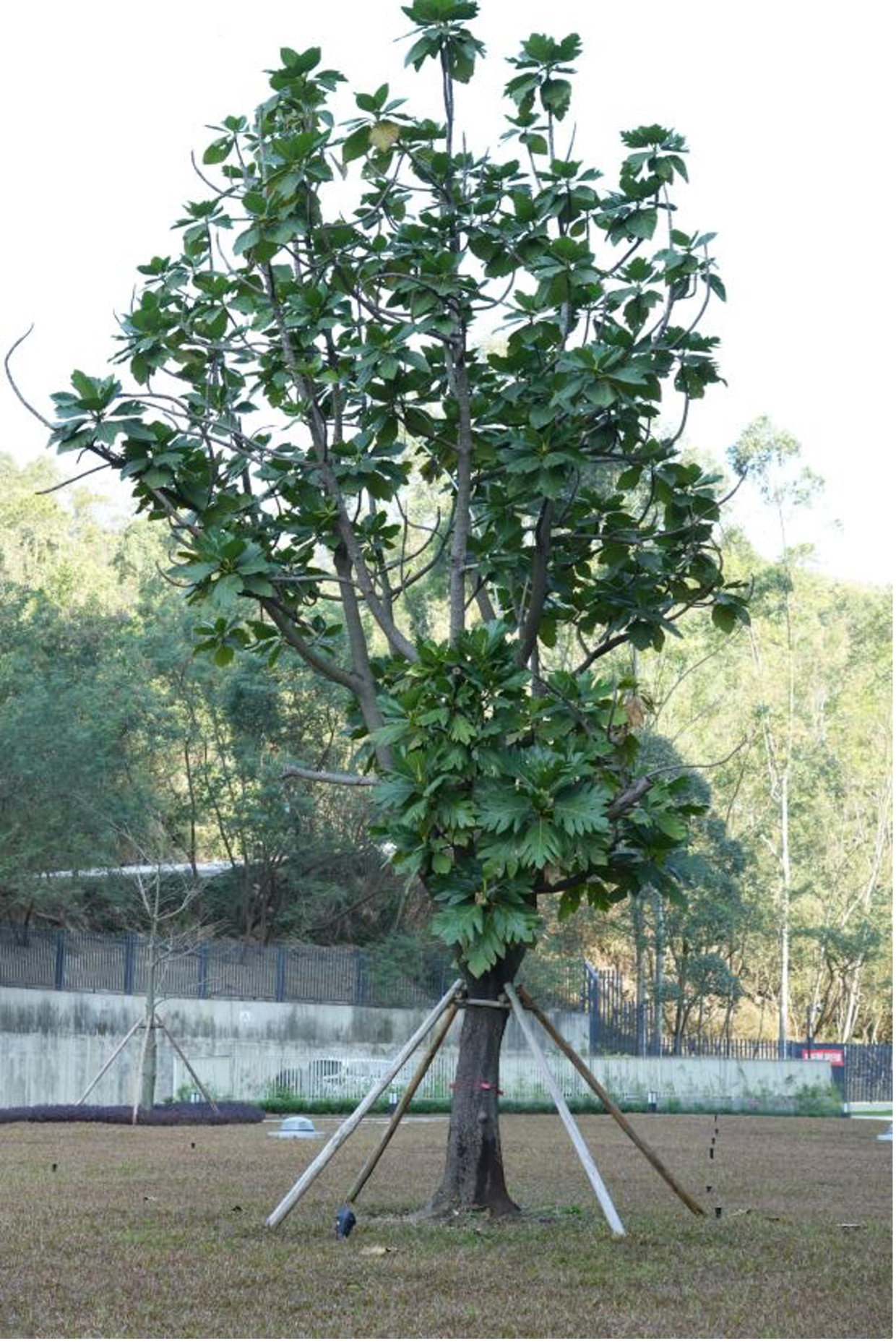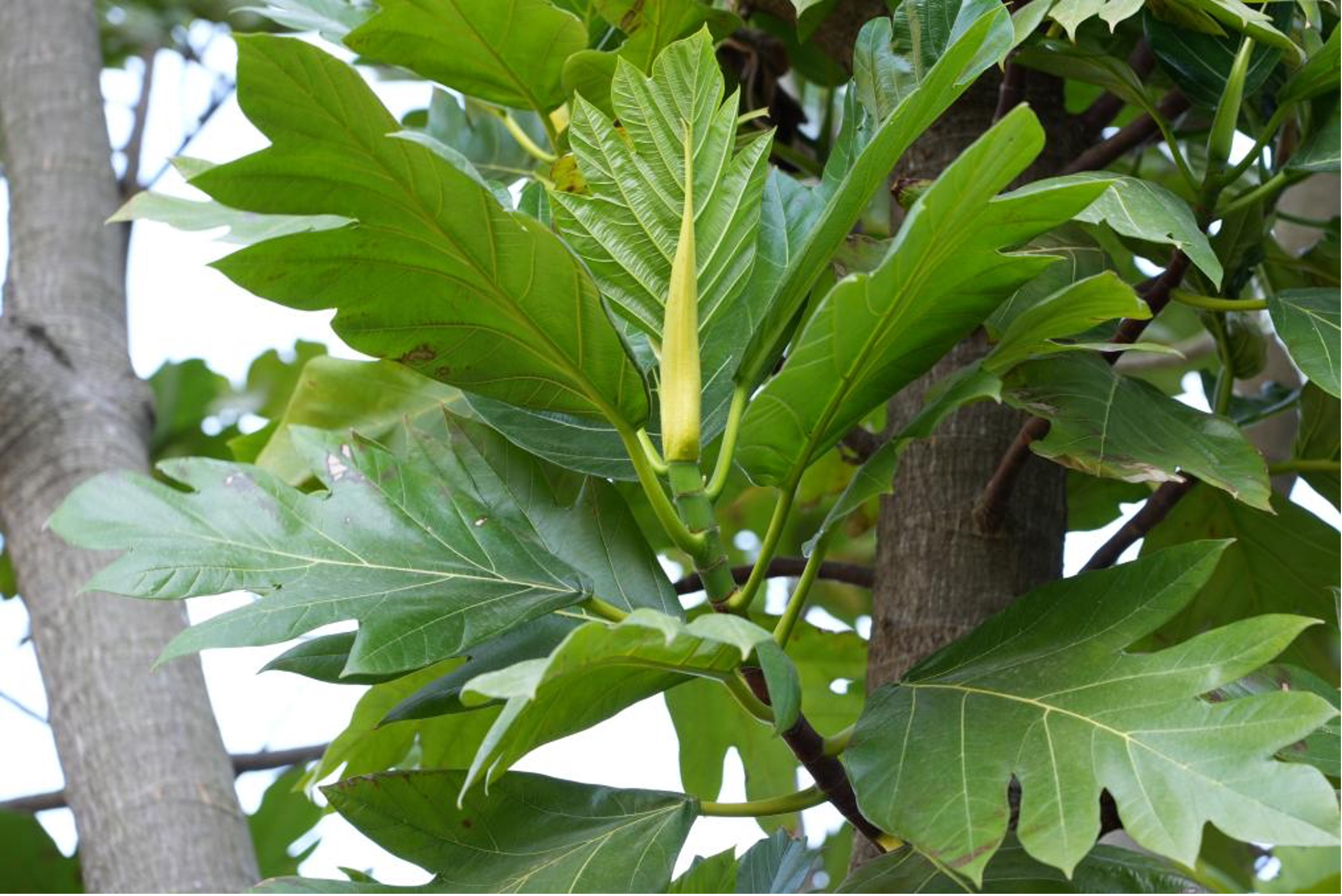At the entrance of the BGI Center stands a unique large tree with a straight trunk and lush branches and leaves. The leaves are very wide and remain a vibrant green even in winter, exuding vitality. This tree is the baobab, known for its nutrient-rich fruit, often referred to as a 'miracle tree.'
Baobabs, belonging to the Adansonia genus within the hibiscus, or mallow, family (Malvaceae), comprise nine different species of deciduous trees. Six species are native to Madagascar, two species to mainland Africa and the Arabian Peninsula, and one species to northwestern Australia. Characterized by their distinct barrel-shaped trunks, these trees are celebrated for their remarkable lifespan and their significance in ethnobotany.
 The baobab tree at BGI Center
The baobab tree at BGI Center
The baobab tree plays a crucial role in the lives of local communities, serving a critical role in local food security. The baobab fruit is highly nutritious, containing all the essential amino acids required by the human body, as well as a variety of carbohydrates, rich minerals, B vitamins, niacin, thiamine, and vitamin C, making it a reliable and beneficial food source. Compared to refined grains, the fruit has a lower glycemic index and offers comprehensive nutrition.
Sir Joseph Banks, who sailed on HMS Endeavour with Captain Cook to Tahiti in 1769, recognized the potential of baobab as a food crop for other tropical regions. He was amazed by this tree-based sustenance, observing that locals could address their food production challenges by planting just 10 trees within an hour, thus ensuring that neither they nor their descendants would ever suffer from hunger again.
In addition, the baobab tree’s massive structure is used for constructing homes, and its roots and leaves are incorporated into medicinal remedies. Additionally, the tree bark yields a strong fiber, used for making ropes and textiles, and it provides essential materials for crafting hunting and fishing implements.
 The photo of the baobab tree's partial.
The photo of the baobab tree's partial.
Although the baobab plays a significant part in local communities, it remains relatively obscure globally, earning itself the name of a neglected or 'orphan' crop. Research into the genomics of such crops offers crucial knowledge that can help address worldwide issues like hunger.
BGI Group is part of an alliance led by the African Orphan Crops Consortium (AOCC), aiming to enhance the nutrition, productivity, and climatic adaptability of these underutilized African crops. This initiative addresses food security and nutritional challenges across the continent. The genomic information produced by the AOCC alliance network is publicly available for use by plant breeders and other crop scientists.
As of 2024, BGI Group has leveraged cutting-edge technology to complete the genome survey of 34 species, The reference genomes of 14 species have been completed, among which eight genomes have been published, with more research underway. These genomic resources are anticipated to aid in the development of nutritionally rich crop varieties.
Dr. Sunil Kumar Sahu, a Research Scientist at BGI-Research and Project Manager of the AOCC Project, notes that, “generating more highly nutritious food and crops to feed the world is a major challenge,” Africa has very unique varieties of orphan crops, which are only utilized in some population clusters or local areas. Such crops have a very high potential to become major staples like rice, maize, and wheat.”
As the baobab tree stands tall at the entrance of the BGI Center, it symbolizes the untapped potential of orphan crops and the burgeoning hope for a food-secure future. The efforts of BGI herald a new era for African agriculture, where orphan crops like the baobab are no longer left in the shadows but are brought to the forefront of scientific research and development.
Source:
Britannica – Baobab:
https://www.britannica.com/plant/baobab-tree-genus
Scientific American – Baobab tree:
https://mp.weixin.qq.com/s/mqbDZQkU3Plp7r3kKBPFGg
National Tropical Botanical Garden – Breadfruit History:
https://ntbg.org/breadfruit/about-breadfruit/history/
BGI Group - Tackling Africa’s Hunger Crisis with Orphan Crops and Genomics:



